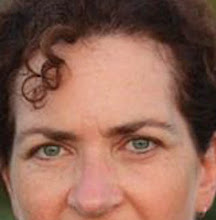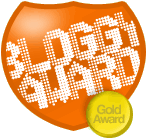Hmmm, ...another bird book soon to be gracing the shelves of the bookstores around town—or so I thought, flipping through the glossy pages of the latest from Princeton University Press.
The Crossley ID Guide: Eastern Birds, to be released in March 2011, boldly features the photographic excellence of Richard Crossley, a life-long lover of birds and admitted “twitcher,” as bird chasers from his native Britain are sometimes called. In 640 beautifully mastered composite plates assembled from over 10,000 single digital images, Crossley has created what he hopes will help us become better birders. Another bird book, a revolutionary guide…really?
With technological prowess, Richard Crossley has taken advantage of the digital revolution to create a guide featuring scenes of different habitats loaded with multiple views of the represented bird—“near, far and everything in between.” Close-ups often show the bird in as much detail as if it were perched on your windowsill, while, in the same scene, a flock of the same forages at the distant horizon or flies silhouetted against the sky. There may be dozens of birds in different plumages, different poses, all scattered across the page—and at first glance, I was confused as to what to do with them all! Hidden in tall spikes of teasel or plucking thistle down from messy, matted seed heads, 17 American Goldfinches looked back at me from one page. Isn’t a field guide supposed to show me a nice, clean picture, and point to some clear field mark so I know what to look for?
In desperation, I turned to the Introduction.
Crossley implores the reader, “please, please, do read on,” for his description of the Guide and its revolutionary approach are nothing like those of the other guides already stacked on my shelf. Several paragraphs later, the purpose for his new Guide became clear.
Instantly, I’ve become a big fan.
Crossley’s intent is to create an interactive experience—involve a birder of any skill level in the active practice of field skills without their ever having to leave home. By studying the 3 or 4 large, captioned images on each page, the reader should then be able to apply and hone their own skills of observation to successfully identify the age and sex of the smaller images in the background--those more like what would be seen in real life.
photo courtesy Crossley Books, Princeton University Press
While the photography is clearly center stage in this new Guide, I especially appreciated lengthy sections within the introductory text on bird topography, molt, and a discussion of eclipse plumage! (You’ll be hard pressed to find more than a one-line glossary entry of this in most other bird guides) Alpha codes, the shorthand form of common names used by bird-banders, are included as well, both in the index and within each species account. Bravo!
Rather than the taxonometric order found in many other guides, The Crossley Guide arranges species according to habitat and physical similarity. What is logical in a practical sense, however, results in some confusing chapter headings, such as Walking Waterbirds or Aerial Landbirds.
For each species account, a distribution map is included. In an effort to more clearly illustrate the bird’s actual size, in addition to its measurement in inches, 16 pages at the beginning of the Guide show smaller photographs of the birds as they compare to each other.
It’s a typical February day here in southern Ohio—lifeless and brown all around. Our spring is still weeks away. But, with my trusty heater blasting warmth toward my toes, I sit and stare at page 203, White Ibis. Afternoon sun has cast shadows onto the rippled water where the long-legged waders stand probing in the shallows of the beach.
In the distance, a couple walks hand in hand toward sunset.
It’s not just another bird book.
It’s an inexpensive birding vacation.

















































%20copy.jpg)




















12 comments:
Thanks for sharing this - I will be looking forward to getting my copy. You Have Convinced Me :)
Wow, Nina. Thanks for this--I probably wouldn't have looked twice at "another bird book" if you hadn't reviewed it. (Especially one with photographs, which usually don't show key characters as well as drawings.)
This sounds like it might be really helpful, at least to me.
Nina,
I like the concept in this book. I do have a 3 ft shelf of just bird books, so it is likely I will not get on.
I'm intrigued. I want it! Thanks for the review.
Thanks for the review. It sounds like a "must" book for me. I am a sucker for great photographs.
Nina, this is an excellent book review. I give it two thumbs up!! I've been waiting for it's release!! ~karen
Exquisite review, with perspective , expertise and a touch of panache -- and just in time for me to plan my next birding vacation. Well done !!
Inexpensive birding vacation--agreed. One thing that is funny is that we always say we should spend more time looking at common birds so we can get to know them better, but there are some birds we don't get to see very often so that is hard to do. Now we can do some of that before nodding off to sleep at night by perusing a couple of Crossley ID plates before bed. I have a hard time reading field guides before bed, but I'm going to keep Crossley ID handy for a quick bird nightcap.
This looks extriordinary ! I think I may have "O"'d on that owl photo. I am addicted to birds and bird books. Thanks for the turn on.
SmiLes
LiBBy
When I first saw some samples from this book, some time ago, I thought that it the first 2 dimensional field guide to incorporate the 4th dimension, time. These pages represent one's life experiences with these birds. The "life look" is front and center, while all the other looks spiral out to the edges, with the least satisfying, (and, probably, most frequent, alas)looks in the corners.
Well, maybe I do need one more North American bird guide after all!
Glad to see your review of this book! Though I love the field guides with clearly illustrated field marks, seeing a bird in their habitat often makes their appearance so different. This looks like a great approach to learning habitat at the same time you learn the bird, and offers a way to acquire some jizz before (and after) you get out in the field.
Post a Comment